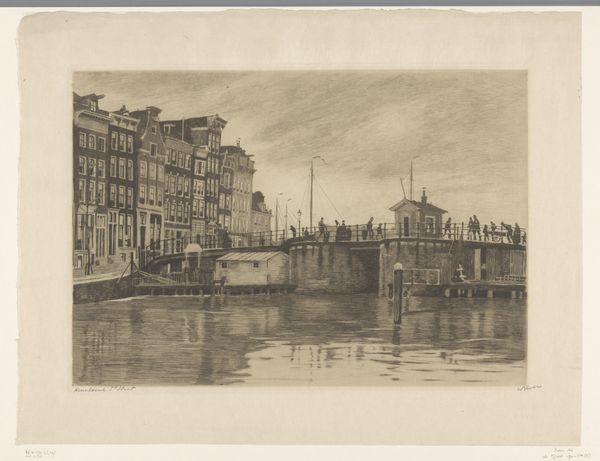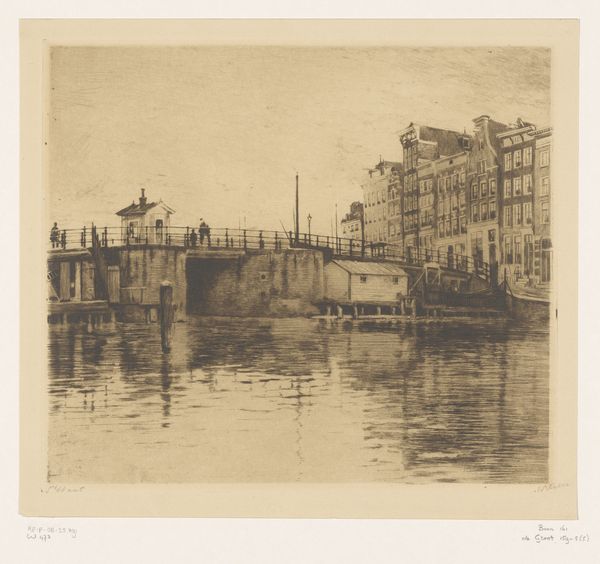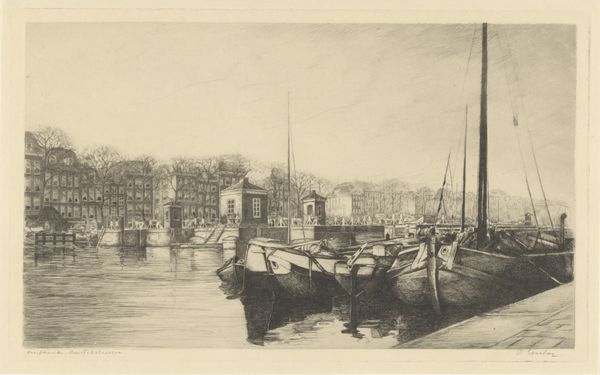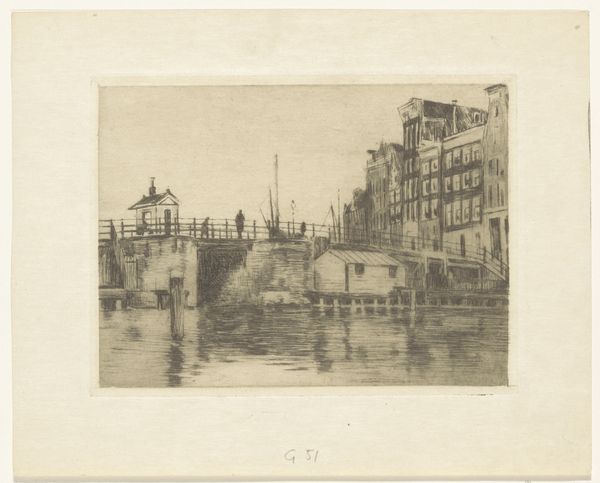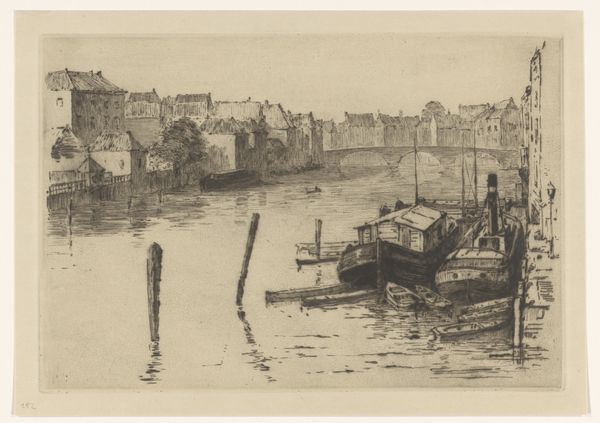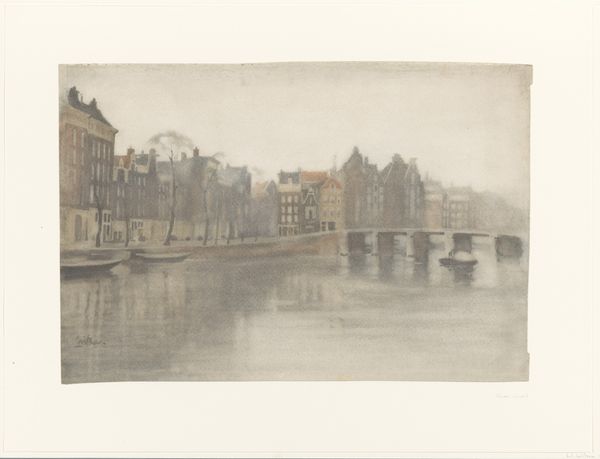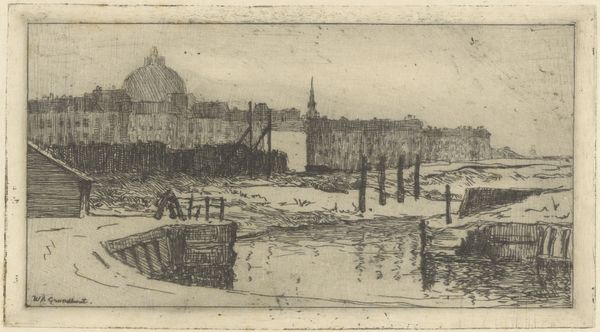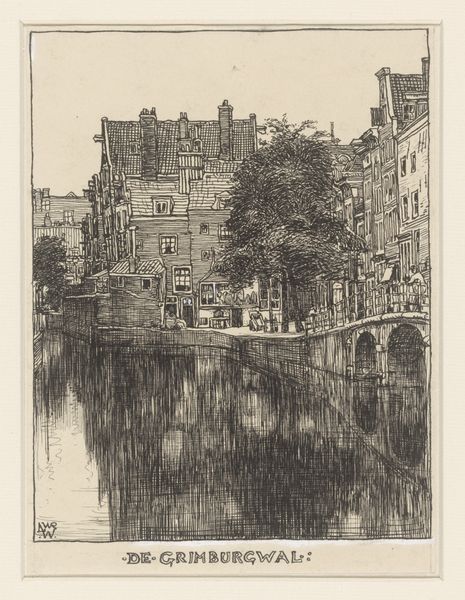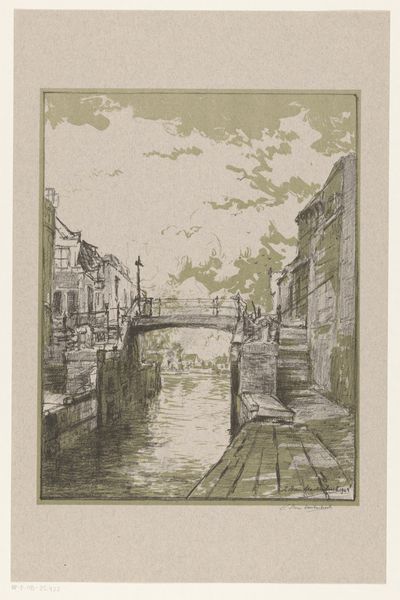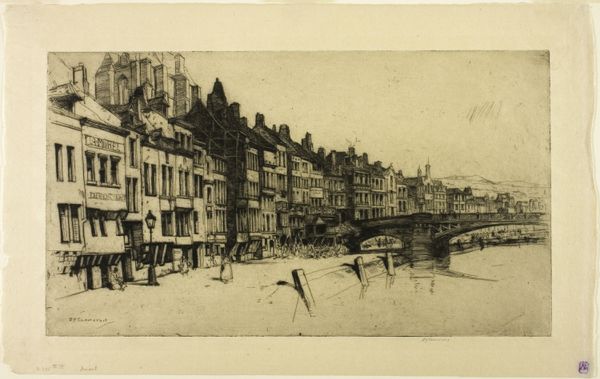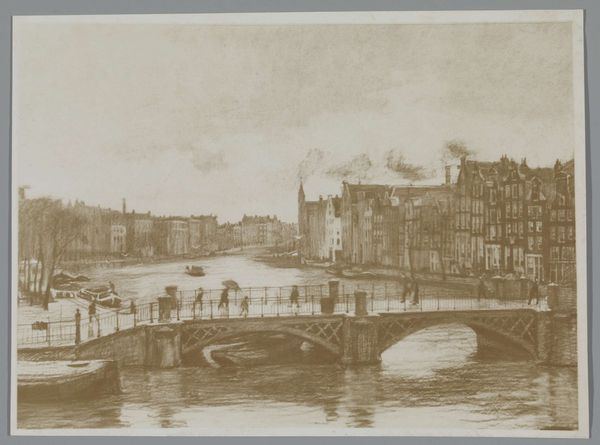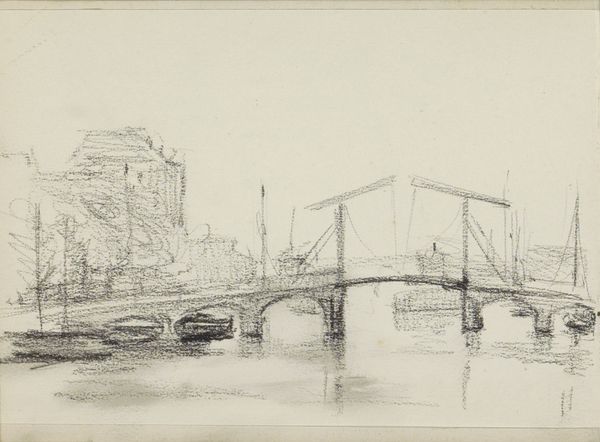
Dimensions: height 347 mm, width 467 mm
Copyright: Rijks Museum: Open Domain
Editor: Here we have Willem Witsen’s “De Kraansluis te Amsterdam,” made between 1870 and 1923 using pencil and graphite. It feels so serene and still, even though it depicts a bustling city scene. What can you tell me about this work? Curator: Well, let’s consider the material conditions that allowed for its creation. Graphite and pencil became increasingly accessible during the Industrial Revolution. Does this democratization of artistic tools change our understanding of landscape art? How does this shift affect who gets to represent urban spaces like Amsterdam? Editor: That's an interesting point. So, the readily available materials impacted not just the ease of creation, but also who could participate in representing the world around them? Curator: Precisely. And the choice of graphite itself - a relatively inexpensive and portable material - suggests a specific intention. Witsen wasn't necessarily aiming for grandiosity or permanence here. Perhaps it was about capturing a fleeting moment in the life of the city, more akin to journalism than historical record. How do you think that changes the narrative? Editor: It feels more immediate, more grounded. Like a snapshot of daily life. This bridges a gap for me and moves past that barrier to entry, by presenting it through this accessible lens, to bring focus onto everyday subjects in this cityscape. Curator: Consider the laborers visible on the bridge – their presence acknowledges the city’s productive forces, unlike earlier idealized landscapes. What can we infer from how Witsen chooses to portray this industry in the everyday? Editor: I see how the artwork emphasizes both the materials of its creation and the materials that build and populate the scene itself. I now also realize that, rather than seeing this as an aesthetic piece, it offers us insight on the value placed on the quotidian. Curator: Indeed. Examining the production of art, and what that can show of labor, materiality, and consumption provides such deeper insight.
Comments
No comments
Be the first to comment and join the conversation on the ultimate creative platform.
